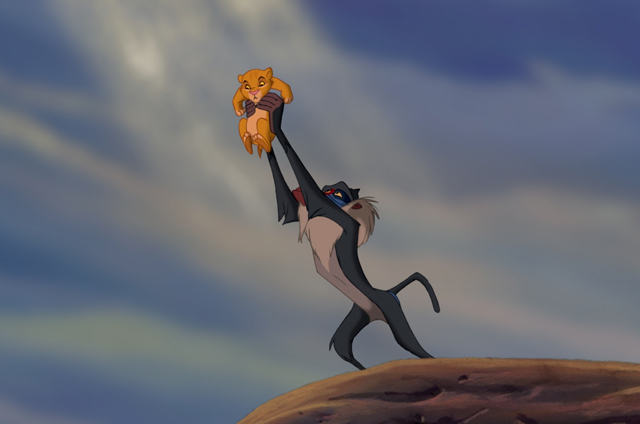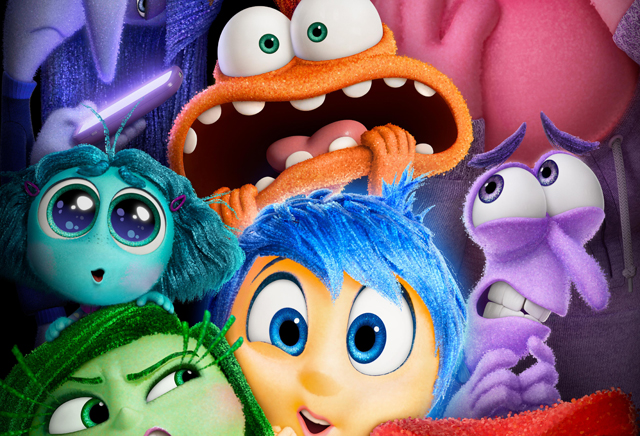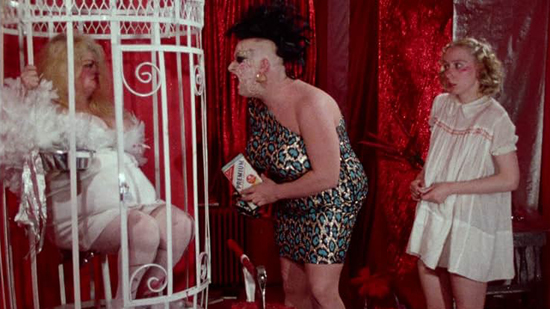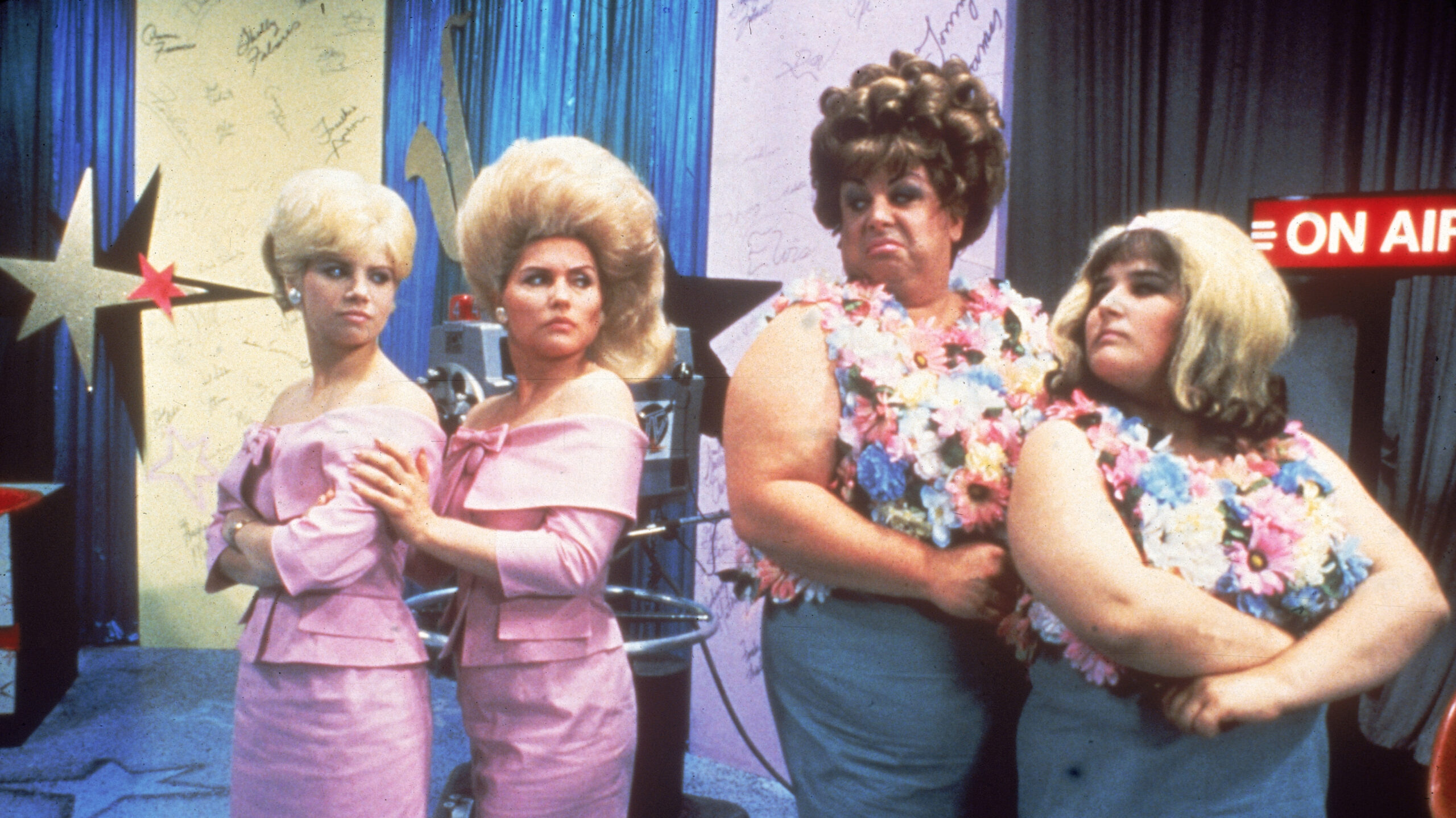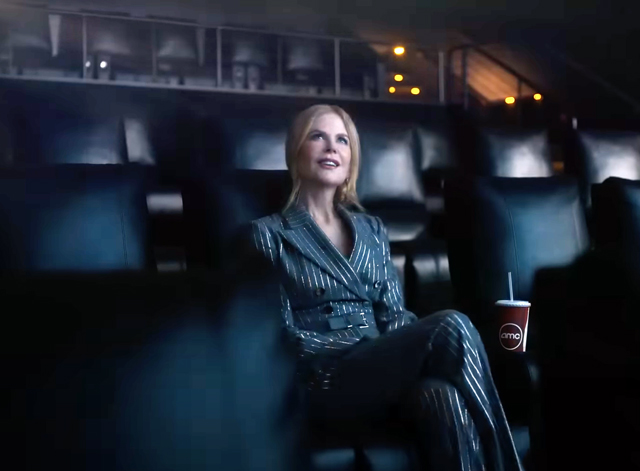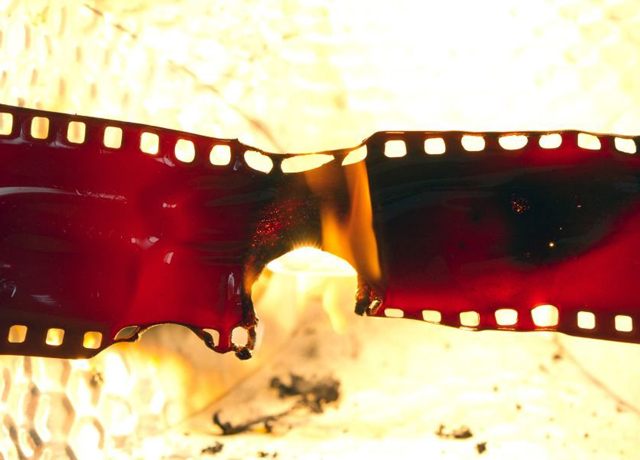
A lot of work goes into the making of a film. A lot of money too. And by the time it has reached the public, the hope is that audiences will not only enjoy what they see, but will want to see it again and again. The life cycle of a movie is an interesting one to observe. For the longest time the way a movie exists out in the world is that it first is experienced in a movie theater with a crowd of other people. Then if the person in the audience felt a real connection with the film, then they may end up purchasing it, either as a physical copy or as a digital download online, after the film has ended it’s theatrical run. The final stage for a movie afterwards is the licensing of the film to outlets likes television or streaming where the movie can be available to watch for the casual watcher to enjoy again or even discover for the first time. There are even the movies that go full circle and end up getting theatrical releases again, for anniversaries or as part of a selection of titles for a festival presentation. But it should be noted that only a select few films ever make it to this stage in their life cycle. Sure, you would think that once a movie is made it should exist for all time. But this sadly is not the case. Film is a bit more finite than many of us realize and in a world that is dependent far more on digital media, we are actually seeing an acceleration of movies that fall through the cracks and are lost to time. There are many reasons this happens, but one of the primary factors is the fact that film preservation is a costly and time consuming procedure, and the industry is just not as concerned about investing in the past. But there is a lot of films from the past that are absolutely worth saving, even if they aren’t all classics. It’s important because every film made, bad or good, is a record of cinematic history and that’s worth preserving.
The biggest problem that affects most films, particularly old ones, is the way that time deteriorates our physical media. Film stock in particular is especially volatile and requires special attention. This is especially true with older movies, some of which were filmed on highly flammable nitrate film stock. It is said that up to 80% or more films from the silent movie era are completely lost, and of the 20% that do survive, they may be fragmented due to parts being damaged beyond repair. That is the nature of cinematic history, that the industry wasn’t really thinking about long term preservation of their work, because it was all about getting the movies made and out into the theaters. As we look at film preservation today, the best that we can do to recreate the way an old movie looked in it’s original state is to have a digital scan of the original camera negative, and sadly, this is the thing that ends up deteriorating first. To compensate, the next best option is to work from a print (and the older the better). A pristine film print is helpful, but it also is not the best quality source either, because the duplication process used to create a print from the camera negative results in a downgrade in the image, and the results are worse if you end up making a copy from something that is already a copy. And then comes the clean-up in film restoration, which itself is time consuming and costly, which is why only the films that are deemed worthy of preservation manage to get saved. Basically, what we know about our film history is formed around what has managed to survive all these years. And there are several factors that can still come into play with regards to what survives. Films have been lost forever due to fires, floods, willful destruction, and just plain old apathy. It’s a truth about all art in general as well, as great works of literature, sculpture and illustration all have to endure the flow of time, which isn’t very forgiving to physical works.
But, certainly with the limitless ability to store data in a digital realm, works of art such as film should be able to last forever, and defy the ravages of time that have caused so many works to be lost. Even here there are some worries. One, even though data is not finite it still is not indestructible. Movies that are preserved as a digital master must exist somewhere, and that somewhere is on servers computing for the digital space you are accessing the movie from. At this point, you are dependent on that digital platform for keeping the film in their library, and this is not always a guarantee. Streaming has changed the game quite a bit when it comes to gaining access to a movie. In some ways, it has helped to increase exposure for a lot of movies that otherwise might have been forgotten, as streaming is dependent on having deep libraries of content to entice subscribers to join. But, with the movie studios being far more protective of their IP, this also has led to a decrease of the flow of movies across platforms that used to define the streaming market. When it was just Netflix, Amazon and Hulu, the studios would be paid handsomely for the license to air their movies, much like how it worked on airing for television. This would help to give more movies a longer lifespan outside of theaters, especially if there were long-term agreements set up for airings before a movie’s initial release. But, the consolidation of IP into each studios’ in house streaming service is having the effect of a lot of these pre-release agreements not materializing anymore, and from that point it is left up to the studios to decide what they want to do with their movies. You might think that it benefits movies to have a secure home on a streaming platform, but that really isn’t the case as the studios are also neglectful of even their own movies.
One of the biggest problems with the consolidation of IP for the purpose of streaming is that it takes the ownership away from the consumer. Without the licensing model being put in place, movies are locked away within the vaults of the studios more strictly, and they ultimately determine what we are going to see. Take the example of Disney, and their Disney+ streaming service. Sure, you have easy access to all the familiar films that we know from the studio, with the big pillars of Disney Animation, Pixar, Star Wars and Marvel being the brands easily browsed on the service. But, sadly, Disney is putting the value in their marquee titles and not on the deeper reaches of their catalog. One thing that especially feels underutilized on their service is the library of films they acquired from their merger with 20th Century Fox. A whole studio’s worth of movies and television shows that spans nearly a century, and only a small handful of their classics are found on Disney+, like The Sound of Music (1965). Sure the further integration of Hulu onto the Disney+ platform is helping to expand the roster of Fox films on the service a little, but there are still literally hundreds of movies that are out of the public view because Disney is not fully integrating the Fox library onto streaming. The same kind of limited library access is also affecting the other studio streamers as well, with platforms like Max and Paramount+ being very selective about what is available to watch on their platform. These streamers are also governed by algorithms that determine what should be pushed towards their audience attention, which could also lead to a decrease in exposure for some movies. There certainly are some benefits to be sure for streaming, especially with studios beefing up their investment in new digital masters for all their titles on there, including new restorations. But, even with the vastness of potential on digital platforms, some movies are going to be lost.
And then there’s also the more insidious action taken by the studios to remove movies and shows from their platforms entirely. We saw not too long ago where studios like Warner Brothers and Disney were removing content from their platforms purely in order to collect a tax write-off. That means that these movies, many of which were exclusive to the streamers, just cease to exist. Tax write offs only work if the studio promises to never profit off their removed content ever again. That means they will never reappear on the streaming platform, nor be available to purchase anywhere else. And it’s not just small films or shows that are getting this treatment. Disney removed their expensive TV spin-off of the movie Willow (1988) and if you missed it the first time you are out of luck as the show was yanked for a tax write off. On Max, Warner Brothers pulled the Doug Liman directed pandemic movie Locked Down (2021) which starred Anne Hathaway and Chiwetel Ejiofor for the same purpose, and I’m sure none of those A-Listers would ever have thought that one of the films on their resume would just cease to exist. It’s a disturbing trend that movies and shows can just so easily be thrown away and kept from viewing eyes. It really upends the life cycle of a movie, which for many movies still allowed audiences a longer time to discover a film as it went from theaters to home entertainment. Locked Down didn’t even get a full year. But, some people still feel that their access to movies are safe if they bought them through a digital retailer. That unfortunately was challenged during a recent merger between two Japanese anime streaming providers. Crunchyroll and Funimation were the leading online retailers of anime content, and late last year, they began the move to merge into one single platform. Unfortunately, it was decided by Crunchyroll that none of the previous catalog purchases on Funimation’s site would carry over in the merger. That means that people who paid to buy a digital copy of the movies on the Funimation website would no longer have ownership of their movies. Understandably, people were upset that their purchases were basically voided out so that Crunchyroll could generate their revenue purely through subscription. While this is not a widespread case in the industry yet, it could still easily happen elsewhere. Sadly, the streamers have too much say in what is considered ownership of a film.
That’s why so many cinema fans out there are feeling more impassioned to put their money towards physical media. When you own a physical copy of a film, it is yours to watch forever. But sadly, with streaming still dominating the minds of studio executives at the moment, it is leading to a decline of the once prosperous home video market. Disney earlier this year completely shuttered their own in-house physical media distribution wing and are now outsourcing their future releases to Sony instead. We’ll still see some Disney movies released on physical media, but it may be determined solely on what they deem worthy. In truth, far fewer movies are going to be released on physical media in the future; a privilege given to just a chosen few. Other small movies may just only be lucky to get a special release from a third party publisher like Shout Factory or Criterion, but only if they somehow maintain exposure in the public eye. Like so many works of art throughout the years a lot of movies may not survive this new world of home entertainment. The studios iron grip on what gets put onto their platforms coupled with the decline of physical media production as well as the threat of streamers not honoring the ownership of past purchases all creates a great worry that we are going to see an acceleration of lost media in our lifetimes. And that creates a lot of anxiety for cinephiles who worry that a huge chunk of our cinematic history could fade into oblivion. Cinema may be only a bit more than a century old as an artform, but it has also become a crucial part of our heritage as a global community. We let a big chunk of it fade into obscurity, or worse get deleted from the world based on the whims of the studios, we lose a bit of ourselves in the process.
So, what can be done. We as individual collectors certainly can’t save every film; we don’t have the shelf space nor the money to make that happen. What I have found to be a good way of preserving what we can of film history is to diversify our personal collections. I for one make an effort to have all of my movies in both physical and digital form. Most physical movies on the market from first parties do include a redemption code for a digital copy of the movie. While not all of the studios allow you to redeem from all digital retailers (Paramount and Lionsgate are notorious for this), the codes are good pretty much anywhere digital movies are sold. What I recommend is setting up an account with Movies Anywhere. On this particular service, they do allow you to purchase off of their platform, but they are also valuable as a service that links your account with them to most of the other digital retailers. By redeeming your code through them, your digital copy will be available to watch on iTunes, Fandango at Home (formerly VUDU), Google Play and Amazon. Having accounts synced up like this ensures that your movie will be available to watch across multiple platforms, and that will help to safeguard your access to that movie in case one of those retailers decides to cut the film out of their library. Back-ups are the key to helping keep a movie available to watch. Physical media is the preferred format to watch a film, since you’re movie is being sourced locally from the disc itself and not through the internet. But, physical media does deteriorate over time, so upgrading to better formats are ideal if it’s affordable and available. I’ve gone through multiple purchases of the same films many times, from DVD to Blu-ray to 4K UHD, but if you only need that one time purchase, make sure to take good care of your films. Safeguarding your movies in their original packaging is ideal, and make sure you avoid scratches and environmental dangers like extreme heat when the movie is outside of it’s package. Downloading your movies and storing them in multiple Hard Drive back-ups can also ensure you have a movie preserved. You may not help every movie survive, but if enough diligent collectors take the right steps, collectively we may all be able to safeguard enough movies to help most of them survive long term into the future.
I think a lot about how so much of our collective understanding about our culture is based what has managed to survive through the centuries. I remember in my college English literature classes a lecture about the different tragedies that led to the destruction of key written works that gave a clearer picture of the times that they were written. Think about what was lost in the fire that destroyed the Library of Alexandria, or the art that was sacked and mishandled during conflicts like the Crusades or the Mongol Invasions, or the Cotton Library Fire that destroyed many medieval manuscripts. As my English professor made clear, out of all this historical chaos, it’s a miracle that something as ancient as Beowulf managed to survive into modern times and helps us to understand the role of literature of in the times of the Vikings. The same goes for monuments such as the Pyramids of Giza, or the Parthenon in Athens. What we know of our history comes from what has survived all these centuries. We can only piece together from fragments in order to create an understanding of the whole. While cinema is still a young art, it is nevertheless prone to the same destructive forces of time like the rest of what mankind has created. Time has already taken it’s toll on some of our cinema history. And the increasingly short-sighted moves made by studios to give them more control over what we are allowed to see is making it increasingly possible that we are going to lose a lot more. We can do something about it. Hold the studios accountable whenever they deem your purchases voided. Make demands on what movies you want to see preserved. Do what you can to diversify your library, especially when it comes to physical media. An analog collection of movies may be prone to the ravages of time, but it also ensures that you have ownership of that movie, and it can’t be taken away by a studio. Movies should have long lifespans after they are released, because not everyone gets to see a movie the first time around and there are many cases where it took years for a film to truly achieve classic status with it’s audience. Movies ranging from It’s a Wonderful Life (1946) to The Iron Giant (1999) only became classics because they were given the chance to be discovered in other other mediums over a long period of time. Now the are no longer cult hits, but rather mainstream masterpieces, and the current climate of short term success in the overcrowded streaming market would not let that happen. The hope is that there are enough passionate movie lovers out there who will not allow for movies they love to fade away. We owe it to ourselves to try all we can to help keep the movies immortal and last for generations to come.
